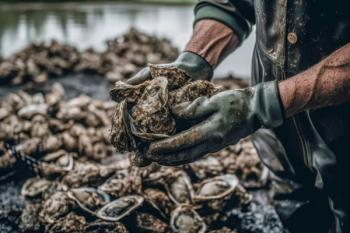
- The Column-07-26-2013
- Volume 9
- Issue 13
Sugar intake biomarker
A new candidate biomarker of sugar and sugar-sweetened beverage (SSB) intake has been proposed in a recent study published in the Journal of Nutrition.1 The study presents the carbon isotope ratio of alanine as a new biomarker for use in studies monitoring dietary sugar intake
A new candidate biomarker of sugar and sugar-sweetened beverage (SSB) intake has been proposed in a recent study published in the Journal of Nutrition.1 The study presents the carbon isotope ratio of alanine as a new biomarker for use in studies monitoring dietary sugar intake.
Scientific studies following the dietary intake of sugar are often dependent on questionnaires, interviews, or self-reporting of patients; however, it has been shown that most patients find it difficult to maintain accurate records. Corresponding author of the study, Diane O’Brian, said that this is specifically true for sugar intake, as research has demonstrated. Valid biomarkers can improve accuracy of diet studies, further improving the understanding of links between diet and diseases — specifically, studies attempting to determine the contribution of sugar intake to obesity and chronic disease risk.
In the US, 75% of dietary sugar originates from sugar cane and corn that are naturally enriched by the heavy stable isotope of carbon, 13C. The team sought to identify whether a correlation existed between the levels of13C ingested and the ratio of δ13Calanine in essential amino acids.
Urine assays to assess levels of sucrose and fructose have been validated, but repeated collections and day-to-day variability are limiting. The authors suggest that a biomarker that could be measured within single hair and blood samples would be an ideal addition to clinical studies.
The scientists recruited 68 participants from two coastal Yup’ik communities in Southwest Alaska to take part in the study. Blood and hair samples were collected and analysed by gas chromatography–combustion–isotope ratio mass spectrometry (GC–C–IRMS) to determine associations between ¬13 C in essential amino acids and sugar intake. δ13Calanine was found to be strongly associated.
O’Brian told The Column: “We measured the carbon isotope ratio in alanine, an amino acid that has a close metabolic link to glucose. Glucose derives from dietary starches and sugars — the greater the intake of corn and cane-based sugars, the higher the carbon isotope ratio of glucose.” She added: “Alanine essentially captures a longer-term record of the isotope ratio of glucose, that can be measured in the proteins abundant in blood and hair.”
Reference
1. K. Choy et al., Journal of Nutrition143, 878–884,DOI: 10.3945/jn.112.172999 (2013).
Articles in this issue
over 12 years ago
Cell division snapshotover 12 years ago
Nano LC–MSover 12 years ago
The Latest Buzz on Honeybee Declineover 12 years ago
Nanoparticles in the Food Industry: Food Packaging's Silver Liningover 12 years ago
The Edge of FailureNewsletter
Join the global community of analytical scientists who trust LCGC for insights on the latest techniques, trends, and expert solutions in chromatography.




